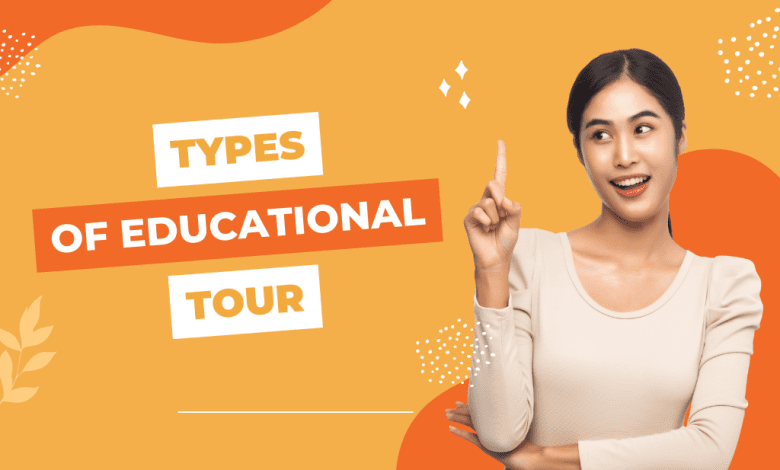Top 5 Types of Educational Technology From Around the World

It’s no secret that technology has transformed the way we learn. From online classes to virtual reality simulations, educational technology has opened up a world of possibilities for students everywhere. But did you know that different countries are leading the way in different types of educational technology? In this blog post, we’ll take a look at the top 5 types of educational technology from around the world, and how they’re being used to revolutionize the way we learn.
1) Adaptive Learning Systems
Adaptive learning systems are rapidly becoming the norm in education today, thanks to the development of sophisticated algorithms and data-driven methods. Adaptive learning systems are designed to assess a student’s current level of knowledge and then adjust the educational content accordingly. This enables students to learn at their own pace, receive personalized guidance, and focus on material that is most relevant to them.
The use of adaptive learning systems has a number of benefits for both students and educators. For students, it allows them to learn in a more engaging and enjoyable way, while also providing them with the tools they need to achieve better results. For educators, it can free up more time to spend with individual students, as well as provide valuable insights into learning progress.
Some of the most popular types of adaptive learning systems include online learning platforms such as Khan Academy, AI-powered tutoring solutions like DreamBox, and automated assessment systems such as ALEKS. All of these solutions are designed to offer personalized instruction, feedback, and recommendations to students. As technology continues to develop, we can expect to see even more innovative solutions being developed in the future.
2) Online Collaboration Tools
Online collaboration tools are one of the most popular types of educational technology. These tools allow students and teachers to communicate and collaborate over the internet. They can be used to share documents, notes, presentations, and other materials with multiple people at once. Examples of these tools include Google Drive, Dropbox, Slack, Zoom, and Microsoft Teams. With these tools, teachers and students can work on projects together, share ideas, and even work on group assignments.
Online collaboration tools also offer opportunities for group-based activities. Students can create virtual study groups to help each other out with studying or to brainstorm ideas. This can be a great way to get different perspectives on a project or activity. Teachers can also use these tools to facilitate discussions between students or host virtual meetings and events.
Overall, online collaboration tools provide a convenient and effective way for teachers and students to work together. By providing an easy way to share documents and ideas, these tools make it easier for teachers to facilitate learning in the classroom. They also make it easier for students to work on projects together and get different perspectives on assignments.
3) Mobile Learning Platforms
Mobile learning platforms are quickly becoming one of the most popular forms of educational technology. These platforms are designed to deliver course materials, assessments, and other learning resources to students’ mobile devices. This type of technology offers tremendous flexibility in how and where students access information.
Mobile learning platforms can include apps, e-learning modules, webpages, and interactive media. With these platforms, instructors can deliver their courses directly to a student’s mobile device. This eliminates the need for a physical classroom and provides greater access to course material from anywhere.
Some of the benefits that mobile learning platforms offer include enhanced engagement, improved accessibility for all types of learners, and reduced costs for developing and delivering content. Mobile learning also provides students with the ability to learn at their own pace and schedule. Additionally, some of these platforms allow students to connect with each other, enabling them to collaborate more effectively and build stronger networks.
Mobile learning platforms are revolutionizing the way education is delivered and accessed. With this technology, teachers and students alike have greater access to course material and the ability to learn anytime and anywhere.
4) Virtual Reality in Education
Virtual Reality (VR) has become increasingly popular in the world of educational technology. VR can be used to create an immersive learning environment in which students can explore various educational scenarios without the need to be physically present in a particular location. It has been shown to enhance learning by improving student engagement, motivation, and understanding of subject material.
VR can also be used to create interactive simulations and 3D models, which allow students to experience educational scenarios in a more realistic manner. For example, students can experience virtual field trips to historic locations, explore scientific and engineering principles, or take part in activities such as archaeological digs or space exploration.
VR is also being used to develop educational applications that enable users to experience a range of interactive scenarios such as virtual medical surgery, flying a plane, and participating in physical education classes. By leveraging VR technology, these applications can provide users with the feeling of being in an actual physical environment.
Overall, Virtual Reality has the potential to revolutionize the way we learn by providing us with new tools and opportunities for immersive learning experiences. By taking advantage of this technology, educators can create a more engaging learning environment for their students, allowing them to explore and discover new knowledge in a more meaningful way.
5)Faqs
Q: What is adaptive learning?
A: Adaptive learning is an educational technology that uses data and analytics to personalize lessons and learning experiences based on a student’s individual abilities and needs. By tailoring instruction to the student, adaptive learning helps learners move through the material at their own pace and learn more effectively.
Q: What are some examples of online collaboration tools?
A: Some popular online collaboration tools include Google Docs, Slack, Dropbox Paper, Zoom, and Asana. These tools allow users to collaborate in real-time, with each other regardless of location. They also allow users to create tasks, assign them to different team members, and track progress.
Q: What is mobile learning?
A: Mobile learning is an approach to learning that utilizes mobile devices like smartphones and tablets. This type of educational technology allows students to access information from anywhere with an internet connection. It also provides interactive activities and games that are tailored to the individual student’s abilities.
Q: How is virtual reality being used in education?
A: Virtual reality can be used to provide immersive educational experiences for students. This technology can transport students to different places or times and provide interactive lessons that are engaging and memorable. Additionally, it can be used for practical applications like job training or surgical simulations.
Q: What are e-books and digital libraries?
A: E-books are digital versions of books that can be read on any device with an internet connection. Digital libraries are collections of e-books that can be accessed by students and teachers alike. Digital libraries often offer e-books that are tailored to specific grade levels and topics.
6) E-Books and Digital Libraries
E-books and digital libraries have become a popular form of educational technology in recent years. With the proliferation of mobile devices and tablets, e-books provide an accessible, convenient way to access learning materials. Digital libraries make it possible to store and organize large amounts of data that can be accessed by students, faculty, and staff.
The use of e-books in education provides a number of benefits, including saving space and cost savings associated with traditional textbooks. In addition, they are more interactive, allowing students to highlight text, add notes, search for topics, and even access multimedia content. This makes learning more engaging and enjoyable.
Digital libraries offer a range of benefits as well. They provide a central place to store digital content, such as books, articles, audio files, videos, and more. This content can be made available to all students at any time, allowing for greater access to resources. Digital libraries also allow for easy searchability and organization of material for easier retrieval.
Overall, e-books and digital libraries provide a great way to make learning more engaging and efficient. They also help save money and space by eliminating the need for physical textbooks or other learning materials. These tools are becoming increasingly popular and are sure to continue to grow in popularity in the future.





